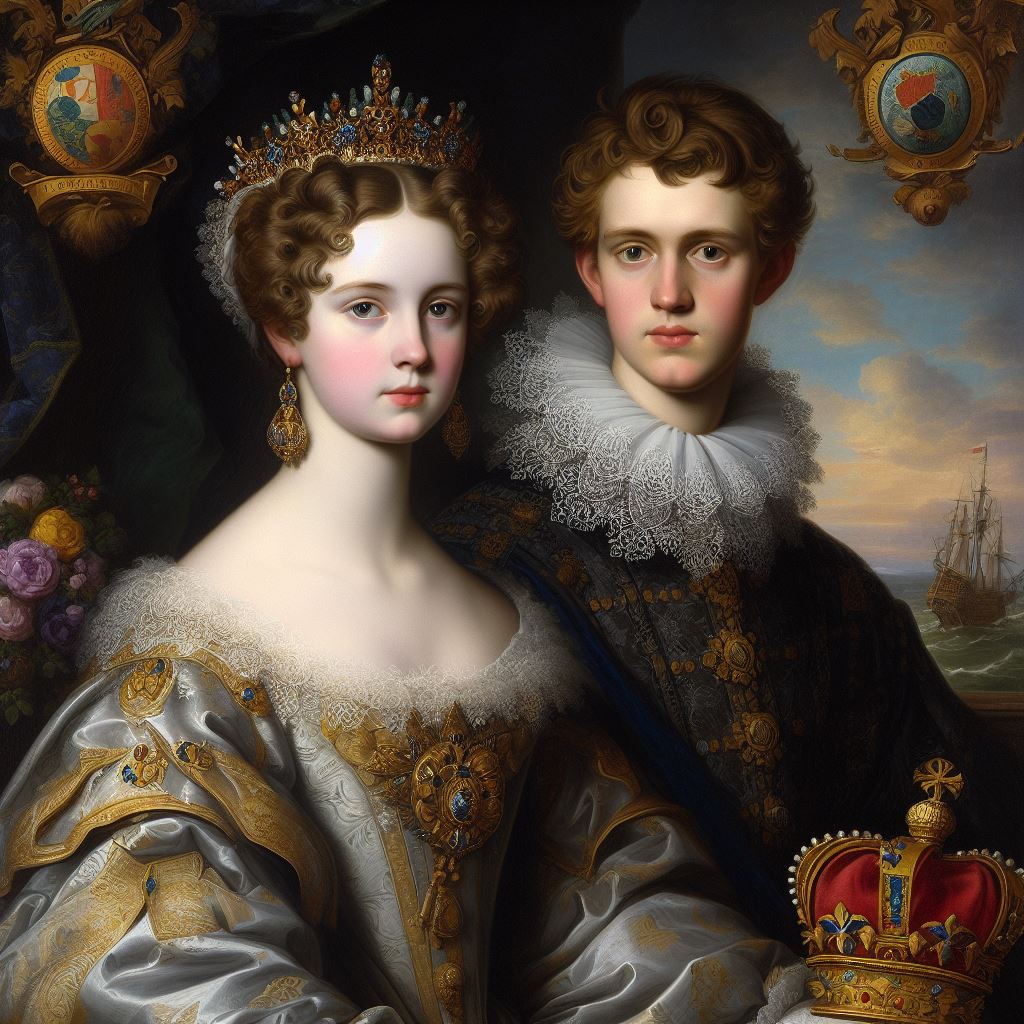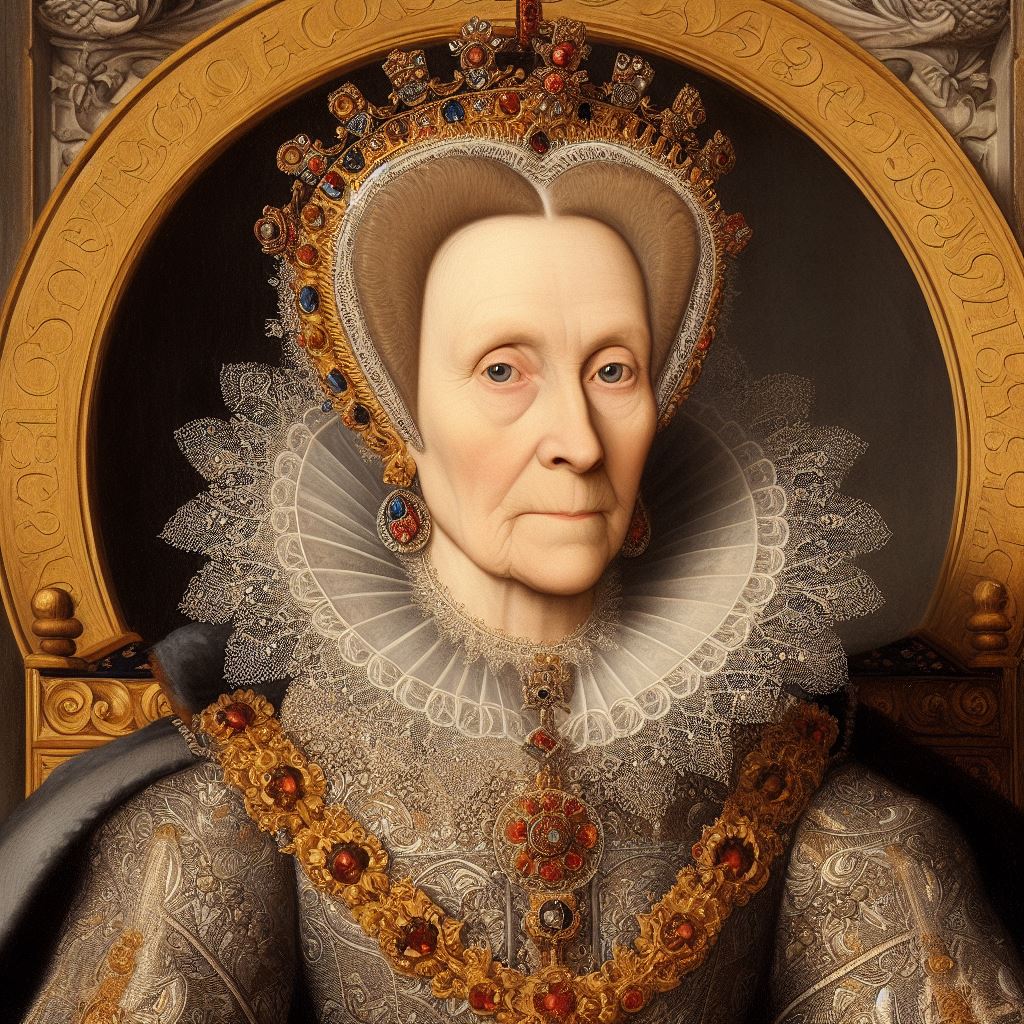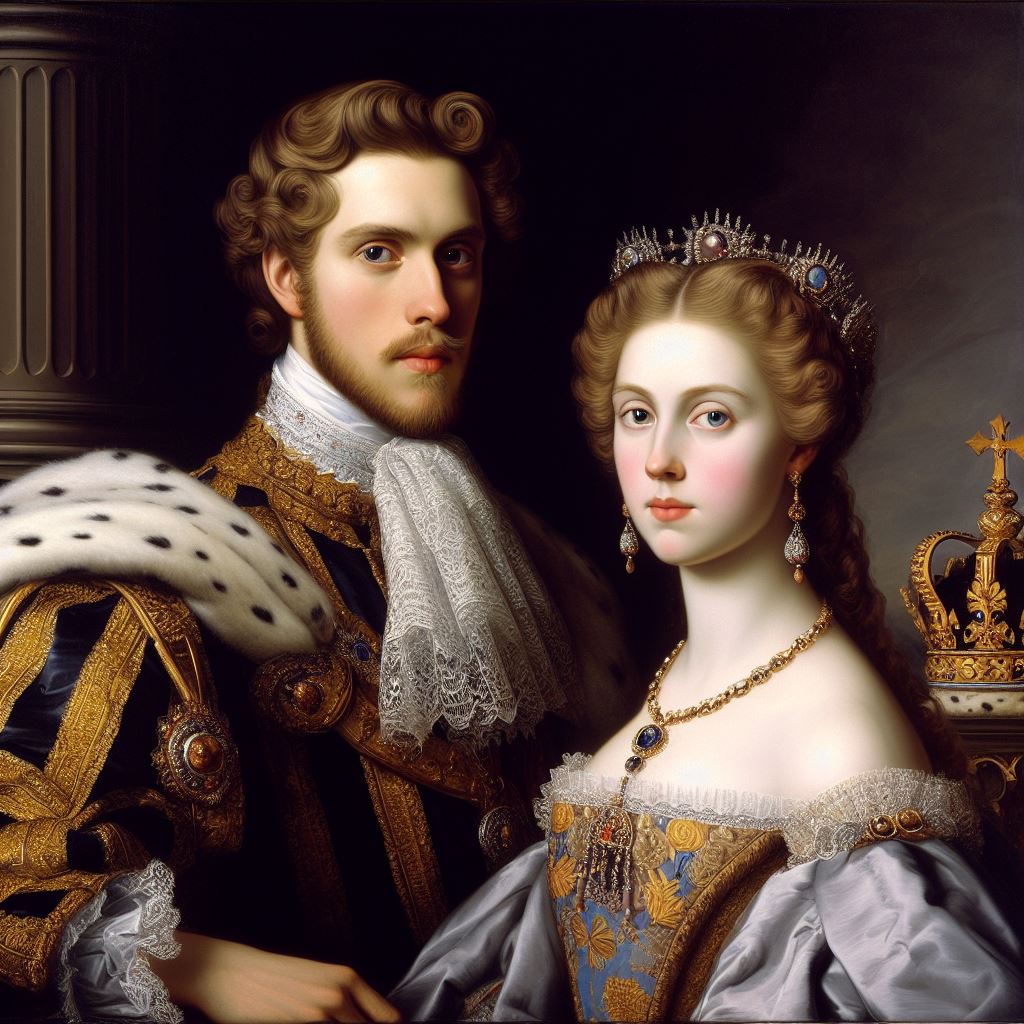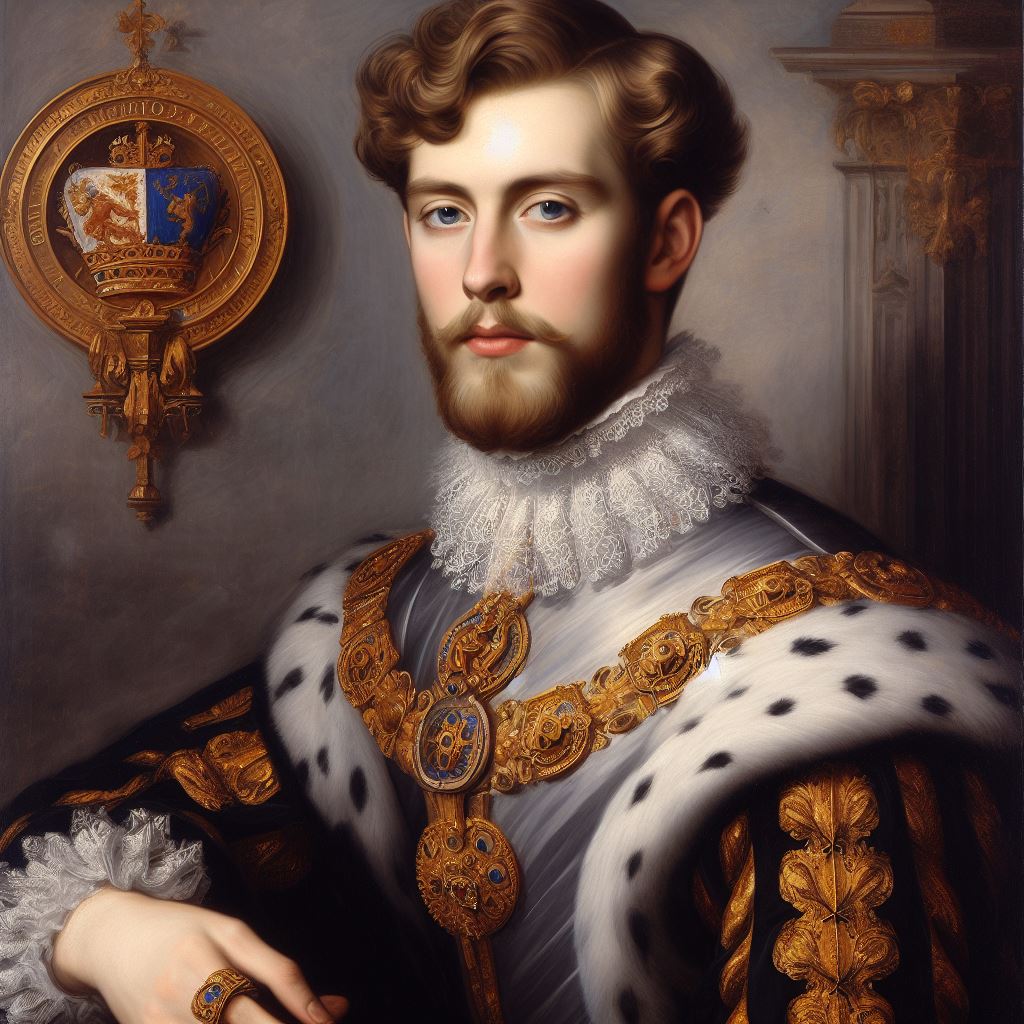The Leicesters
History of England under the House of Dudley-Tudor
Chapters
"Gloriana's Greatest Hope": The Early Reign of Elizabeth II, 1603-1611
From Queenstown to Guinea: England's Colonial Ventures in the early 17th Century, 1612-1625
Threads of Power: England's Colonial, Diplomatic & Dynasty Tapestry, 1626-1640
The Setting Sun: The Final Years of Elizabeth II, 1641-1651
Religious Unity and Political Divide: Edwardian England's Early Years, 1651-1660
Balancing the Crown: Edward VII's Power Play in the New World and Beyond, 1660-1671
The Brief Reign of Edward VIII, 1671-1677
Winds of Change: the Regency and Early Reign of Henry IX, 1677-1687
Glorious Ambitions: The Start of the Personal Rule of Henry IX, 1688-1699
Henry IX and the Stirrings of Change, 1700-1710
Supplementary Readings
The Golden Speech of Elizabeth I, 1603
"Gloriana's Greatest Hope" by Sir William Shakespeare
Genealogy of the Royal House of Leicester
Entries from the Adventures of Sir John Smith
Letter to King Edward VII from His Majesty's Most Loyal Colony of Crescentia
The Four Kings of the New World, from the Diaries of Sir Samuel Pepys
Regional Maps, 1688
Maiden Speech of Henry, Prince of Wales, 1710
Monarchs
Elizabeth II, 1603-1651
Edward VII, 1651-1671
Edward VIII, 1671-1677
Henry IX, 1677-1710
Henry X, 1710-
Preface: The Founding of a Dynasty
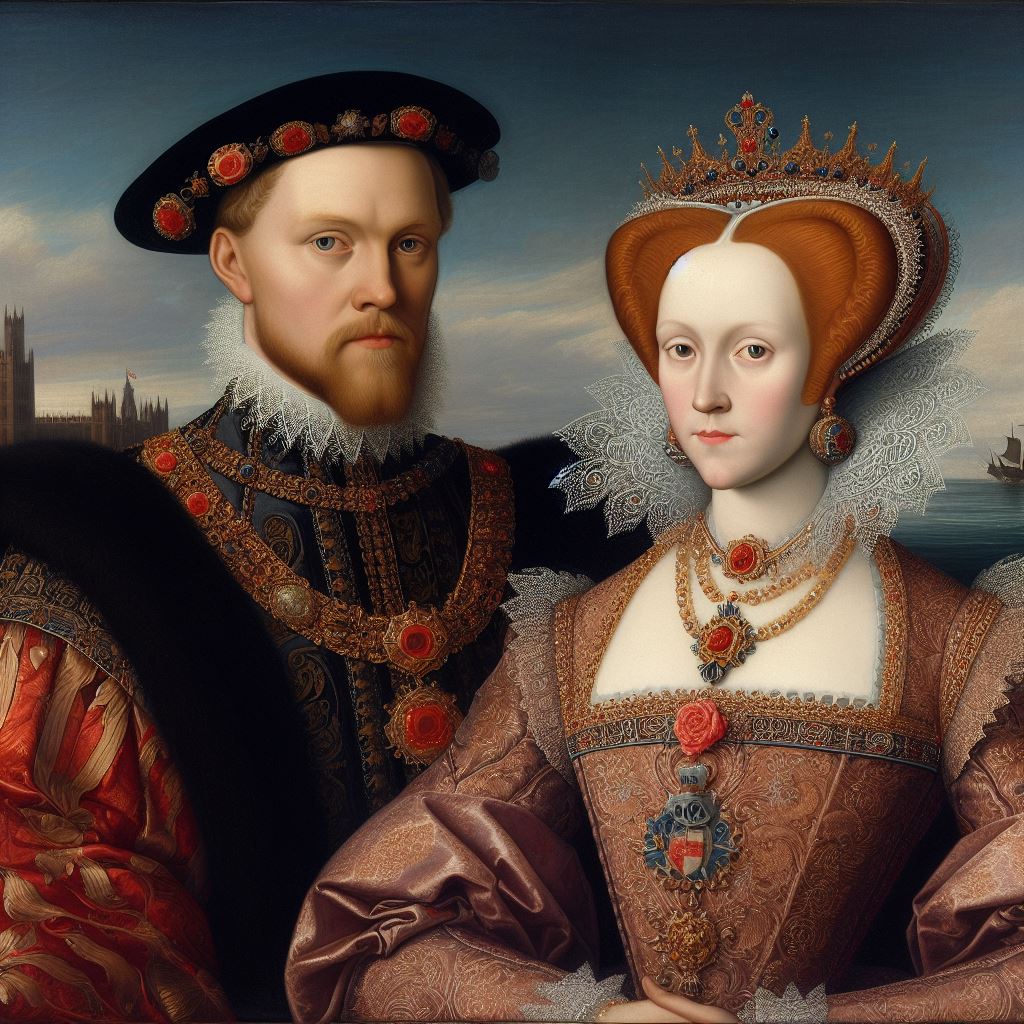
Robert Dudley, Earl of Leicester & Elizabeth I Tudor, Queen of England
In the annals of English history, the House of Tudor stands as a testament to resilience, political savvy, and enduring legacy. The year 1561 marked a pivotal moment when Queen Elizabeth I, defying the expectations of her time, united her fate with Robert Dudley, the Earl of Leicester. This union bore witness to the birth of three heirs who would shape the course of Tudor history: Henry, Prince of Wales, born in 1561; Princess Elizabeth, born in 1563, who later married William of Orange, Stadholder of the Netherlands; and Edward, Duke of Beauchamp, born in 1567.History of England under the House of Dudley-Tudor
Chapters
"Gloriana's Greatest Hope": The Early Reign of Elizabeth II, 1603-1611
From Queenstown to Guinea: England's Colonial Ventures in the early 17th Century, 1612-1625
Threads of Power: England's Colonial, Diplomatic & Dynasty Tapestry, 1626-1640
The Setting Sun: The Final Years of Elizabeth II, 1641-1651
Religious Unity and Political Divide: Edwardian England's Early Years, 1651-1660
Balancing the Crown: Edward VII's Power Play in the New World and Beyond, 1660-1671
The Brief Reign of Edward VIII, 1671-1677
Winds of Change: the Regency and Early Reign of Henry IX, 1677-1687
Glorious Ambitions: The Start of the Personal Rule of Henry IX, 1688-1699
Henry IX and the Stirrings of Change, 1700-1710
Supplementary Readings
The Golden Speech of Elizabeth I, 1603
"Gloriana's Greatest Hope" by Sir William Shakespeare
Genealogy of the Royal House of Leicester
Entries from the Adventures of Sir John Smith
Letter to King Edward VII from His Majesty's Most Loyal Colony of Crescentia
The Four Kings of the New World, from the Diaries of Sir Samuel Pepys
Regional Maps, 1688
Maiden Speech of Henry, Prince of Wales, 1710
Monarchs
Elizabeth II, 1603-1651
Edward VII, 1651-1671
Edward VIII, 1671-1677
Henry IX, 1677-1710
Henry X, 1710-
Preface: The Founding of a Dynasty

Robert Dudley, Earl of Leicester & Elizabeth I Tudor, Queen of England
The reign of Elizabeth I, often hailed as the Golden Age, was marked by prosperity and power, yet it was not untouched by personal tragedy. The untimely demise of Elizabeth's beloved husband, Leicester, in 1588, was a poignant blow. The sorrow deepened with the murder of her son, Henry, Prince of Wales, in 1600, a tragic event orchestrated by Catholic agitators during his visit to the Court of France.
Despite these personal losses, the Dudley-Tudor legacy - known formally as the House of Leicester - endured through the descendants of Henry, Prince of Wales. His two daughters, Elizabeth and Anne, born in 1596 and 1598 respectively, carried the weight of their lineage forward. The birth of Elizabeth, the older of the two, became a symbol of hope and reconciliation for the nation. Her arrival sealed a momentous peace between England and Spain, fostering goodwill after the decisive victory over the Spanish Armada four years prior. This victory, coupled with the Anglo-Austrian alliance's triumphs on the Continent, compelled Philip II of Spain to arrange the marriage of his daughter Catalina Micaela to avert further conflict, solidifying ties between the Tudor realm and the formidable Spanish empire.
As we delve into the annals of the House of Leicester, the intertwining of personal triumphs and tribulations with the broader political landscape unfolds, shaping the destiny of a dynasty that left an indelible mark on English history.
Last edited:
- 2




